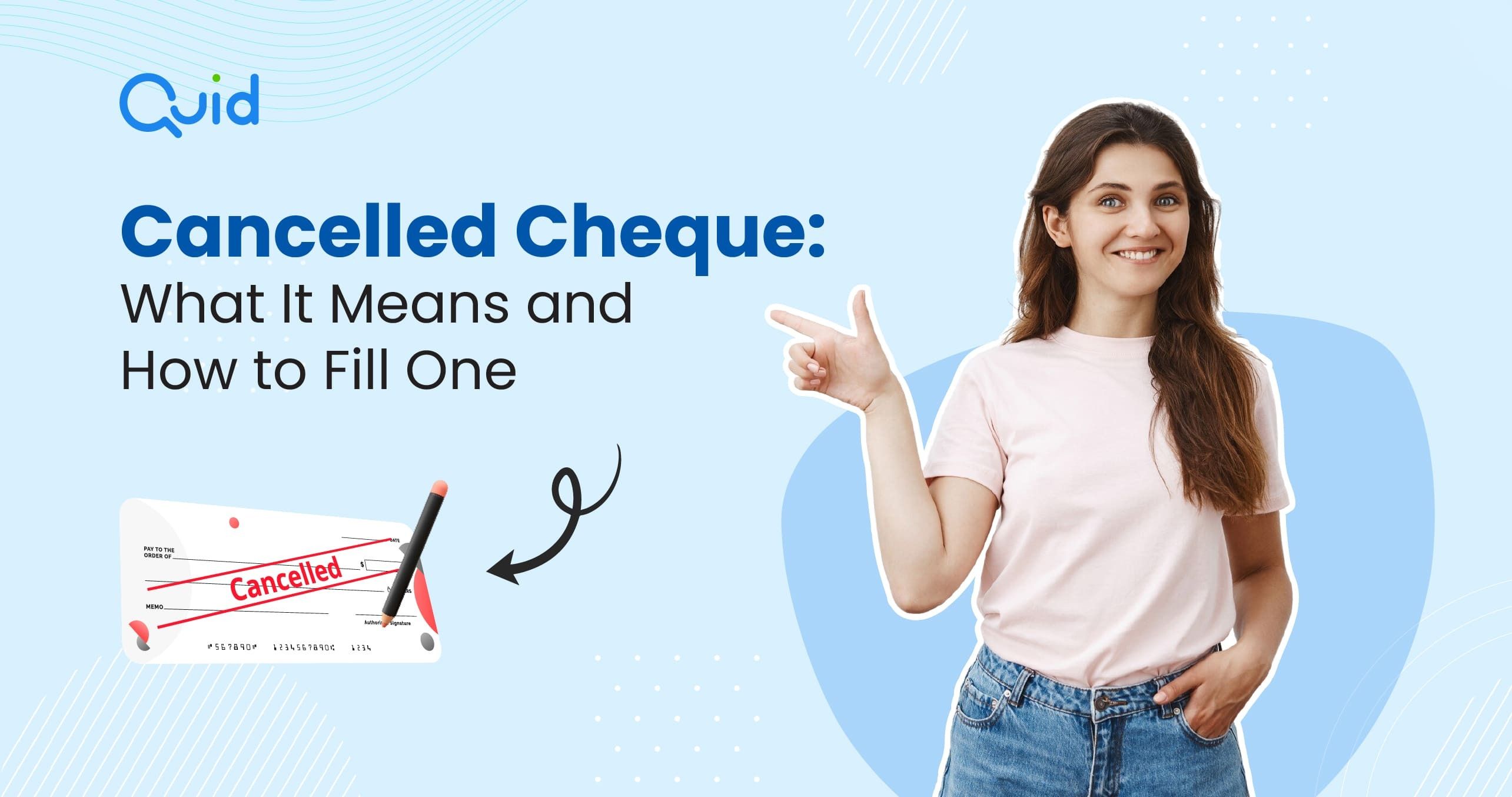
A cheque is a widely used financial instrument that allows the transfer of money from one account to another. It serves various purposes, including payments, deposits, and authorisations. In certain situations, however, there is a need to provide a cheque that cannot be processed for payment, but still carries legal importance.
A cancelled cheque fits this purpose and is often requested for documentation and verification. Knowing how to cancel a cheque properly ensures it serves its intended use without the risk of unauthorised transactions. In this blog, we will cover its meaning, the steps to cancel a cheque, and its uses for various financial processes.
A cancelled cheque is a cheque with the word ‘CANCELLED’ written between two parallel lines drawn across it. While it cannot be used for transactions, it serves as proof of account ownership. A cancelled cheque provides regular essential details such as the account holder's name, account number, bank name, branch, MICR code, IFSC code, and other information, making it useful for financial verification purposes.
Also Read: What is Cheque and Different Types of Cheque?
Below is the cancelled cheque format:
Also Read: How to Fill Cheque: A Step-by-Step Guide
A cancelled cheque holds substantial value for several important purposes:
This type of cheque serves multiple purposes, one of which is to verify an individual’s bank account details. It is often requested when opening a new bank account, applying for a loan, or starting an investment.
It contains key information such as the bank account number, IFSC code, and account holder’s name. These are vital sections for keeping track of financial transactions seamlessly.
Lenders often use a cancelled cheque to securely verify bank account details and ensure they credit the loan amount to the correct account during disbursement.
Individuals typically manage multiple recurring payments each month, utility bills, monthly EMIs, financial investments, and subscriptions. Once activated, it enables the timely auto-debit of funds between bank accounts.
To ensure the correct bank account of a person receives the refund, a cancelled cheque, along with other documents, is requested as proof when filing income tax returns.
Employers often request a cancelled cheque leaf from employees as part of the onboarding process for accurate salary deposits and seamless payroll processing.
This cheque type is commonly requested to verify account details and ensure regulatory compliance, particularly when opening new accounts or investing in financial services.
The blank cheque marked ‘CANCELLED’ is a valuable record for tracking transaction details, including the recipient, amount, and dates of deposits or withdrawals, to resolve payment conflicts.
A cancelled cheque for PF is a crucial document required to withdraw funds from your Employees’ Provident Fund (EPF) account, as it verifies your bank details for accurate transfers.
Most insurance companies request a cancelled cheque when purchasing an insurance policy to verify the account for premium payments or claim settlements.
A cancelled cheque is a key document used in various financial processes where proof of account details is required. Although it does not finalise transactions, it plays a crucial role in salary processing, KYC purposes, loan applications, and other related activities.
The answer to how to cancel a cheque is simple, but following the right steps prevents complications during the submission process. Always use a fresh cheque, draw two parallel lines across it, and write ‘CANCELLED’ between them without signing or filling in other details. So, keep a cancelled cheque in safe place and share it with trusted sources only.
You can sign a cancelled cheque only when the financial institution requests it. Apart from it, not signing a cancelled cheque is a general practice one needs to follow.
A cancelled cheque is safe to use and poses no risk because it has no power to complete any transaction. However, to avoid misuse, always submit it to trusted and verified sources.
Use either a blue or a black pen to cancel a cheque. Using colours other than these two may cause the bank to reject the cheque.
To make a cancelled cheque, take a cheque from your chequebook and draw two diagonally parallel lines across it. Write ‘CANCELLED’ between the lines without signing the cheque.
Yes, in most cases, you can reuse the same cancelled cheque multiple times, especially if it’s for the same bank and account. However, if you're dealing with a different bank or a different process, they may ask for a fresh, cancelled cheque as per their documentation requirements.
Get credit at first sight and be closer to your goals.
Download Now